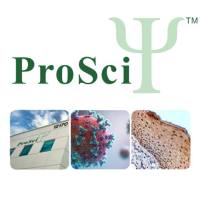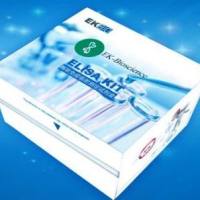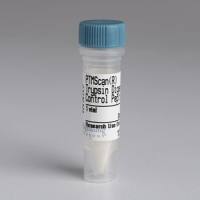Characterization of Neurotensin Receptors
互联网
- Abstract
- Table of Contents
- Materials
- Figures
- Literature Cited
Abstract
This unit describes procedures for performing competition binding assays with neurotensin receptor subtypes 1 and 2 (NTS1 and NTS2). Binding assays using cloned receptors, brain membranes, and primary cultured mesencephalic neurons are presented. NTS1 binding assays employing either radiolabeled neurotensin or SR 48692 (a nonpeptide neurotensin antagonist) as radioligands are described. These procedures may be used to screen selective ligands at neurotensin receptor subtypes.
Keywords: neurotensin; SR 48692; neurotensin receptors; NTS1; NTS2; binding assay; brain membranes; mesencephalic neurons
Table of Contents
- Basic Protocol 1: Measurement of [125I]Neurotensin Binding to Cloned Receptors in Membranes
- Alternate Protocol 1: Measurement of [3H]SR 48692 Binding to Cloned NTS1 Receptors in Membranes
- Alternate Protocol 2: Measurement of 125I‐Neurotensin Binding to Homogenates from Newborn Mouse Brain
- Alternate Protocol 3: Measurement of 125I‐Neurotensin Binding to Intact Rat Embryonic Mesencephalic Neurons in Primary Cultures
- Reagents and Solutions
- Commentary
- Literature Cited
- Figures
- Tables
Materials
Basic Protocol 1: Measurement of [125I]Neurotensin Binding to Cloned Receptors in Membranes
Materials
Alternate Protocol 1: Measurement of [3H]SR 48692 Binding to Cloned NTS1 Receptors in Membranes
Alternate Protocol 2: Measurement of 125I‐Neurotensin Binding to Homogenates from Newborn Mouse Brain
Alternate Protocol 3: Measurement of 125I‐Neurotensin Binding to Intact Rat Embryonic Mesencephalic Neurons in Primary Cultures
|
Figures
-
Figure 1.29.1 Competitive inhibition of 125 I‐NT binding by unlabeled NT and SR 48692 in membranes from NTS1‐expressing CHO cells. The data are derived from Table and were fitted using LIGAND software. K i values are 0.17 nM and 11.2 nM for NT and SR 48692, respectively. View Image -
Figure 1.29.2 Competitive inhibition of 125 I‐NT binding by unlabeled NT, SR 48692, and levocabastine in membranes from NTS2‐expressing COS cells. The data are derived from Table and were fitted using LIGAND software. K i values are 1.44 nM, 420 nM, and 170 nM for NT, SR 48692, and levocabastine, respectively. View Image -
Figure 1.29.3 Competitive inhibition of [3 H]SR 48692 binding by unlabeled NT and SR 48692 in membranes from NTS1‐expressing CHO cells. The data are derived from Table and were fitted using LIGAND software. The K i value is 5.6 nM for SR 48692. Note the complex inhibition curve obtained with unlabeled NT (see Commentary for discussion). View Image -
Figure 1.29.4 Competitive inhibition of 125 I‐NT binding by unlabeled NT and SR 48692 in primary cultures of mesencephalic cells. The data are derived from Table and were fitted using Prism (GraphPad) software. K i values are 0.31 nM and 2.1 nM for NT and SR 48692, respectively. View Image
Videos
Literature Cited
| Literature Cited | |
| Bachelet, CM., Scarceriaux, V., Rostene, W., and Pelaprat, D. 1997. Evidence for neurotensin autoreceptors and relationship of neurotensin and its receptors with tyrosine hydroxylase‐positive neurons in rat primary hypothalamic cultures. Eur. J. Neurosci. 9:1483‐1487. | |
| Brouard, A., Pelaprat, D., Dana, C., Vial, M., Lhiaubet, A.M., and Rostene, W. 1992. Mesencephalic dopaminergic neurons in primary culture express functional neurotensin receptors. J. Neurosci. 12:1409‐1415. | |
| Dubuc, I., Sarret, P., Labbé‐Jullié, C., Botto, J.M., Honoré, E., Bourdel, E., Martinez, J., Costentin, J., Vincent, J.P., Kitabgi, P., and Mazella, J. 1999. Identification of the receptor subtype involved in the analgesic effect of neurotensin. J. Neurosci. 19:503‐510. | |
| Gully, D., Canton, M., Boigegrain, R., Jeanjean, F., Molimard, J.C., Poncelet, M., Gueudet, C., Heaulme, M., Leyris, R., Brouard, A., Pelaprat, D., Labbé‐Jullié, C., Mazella, J., Soubrié, P., Maffrand, J.P., Rostène, W., Kitabgi, P., and Le Fur, G. 1993. Biochemical and pharmacological profile of a potent and selective nonpeptide antagonist of the neurotensin receptor. Proc. Natl. Acad. Sci. U.S.A. 90:65‐69. | |
| Gully, D., Labeeuw, B., Boigegrain, R., Oury‐Donat, F., Bachy, A., Poncelet, M., Steinberg, R., Suaud‐Chagny, M.F., Santucci, V., Vita, N., Pecceu, F., Labbé‐Jullié, C., Kitabgi, P., Soubrie, P., Le Fur, G., and Maffrand, J.P. 1997. Biochemical and pharmacological activities of SR 142948A, a new potent neurotensin receptor antagonist. J. Pharmacol. Exp. Ther. 280:802‐812. | |
| Kitabgi, P. 1992. Biosynthesis, maturation, release, and degradation of neurotensin and neuromedin. N. Ann. N.Y. Acad. Sci. 668:30‐42. | |
| Kitabgi, P. 2002. Targeting neurotensin receptors with agonists and antagonists for therapeutic purposes. Curr. Opin. Drug Discovery Dev. 5:764‐776. | |
| Kitabgi, P., Rostène, W., Dussaillant, M., Schotte, A., Laduron, P., and Vincent, J.P. 1987. Two populations of neurotensin binding sites in murine brain: discrimination by the antihistamine levocabastine reveals markedly different radioautographic distribution. Eur. J. Pharmacol. 140:285‐293. | |
| Labbé‐Jullié, C., Botto, J.M., Mas, M.V., Chabry, J., Mazella, J., Vincent, J.P., Gully, D., Maffrand, J.P., and Kitabgi, P. 1995. [3H]SR 48692, the first nonpeptide neurotensin antagonist radioligand; characterization of binding properties and evidence for distinct agonist and antagonist binding domains on the rat neurotensin receptor. Mol. Pharmacol. 47:1050‐1056. | |
| Labbé‐Jullié, C., Deschaintres, S., Gully, D., Le Fur, G., and Kitabgi, P. 1994. Effect of the nonpeptide neurotensin antagonist SR 48692 and two enantiomeric analogs SR 48527 and SR 49711 on neurotensin binding and contractile responses in guinea‐pig ileum and colon. J. Pharm. Exp. Ther. 271:267‐276. | |
| Lépée‐Lorgeoux, I., Betancur, C., Souazé, F., Rostène, W., Bérod, A., and Pelaprat, D. 2000. Regulation of the neurotensin NT1 receptor in the developing rat brain following chronic treatment with the antagonist SR 48692. J. Neurosci. Res. 60:362‐369. | |
| Mazella, J. 2001. Sortilin/neurotensin receptor 3: A new tool to investigate neurotensin signaling and trafficking? Cell. Signal. 13:1‐6. | |
| Richard, F., Barroso, S., Martinez, J., Labbé‐Jullié, C., and Kitabgi, P. 2001. Agonism, inverse agonism and neutral antagonism at the constitutively active human neurotensin receptor 2. Mol. Pharmacol. 60:1392‐1398. | |
| Scarceriaux, V., Pelaprat, D., Forgez, P., Lhiaubet, A.M., and Rostene, W. 1995. Effects of dexamethasone and forskolin on neurotensin production in rat hypothalamic cultures. Endocrinology 136:2554‐2560. | |
| Vincent, J.P., Mazella, J., and Kitabgi, P. 1999. Neurotensin and neurotensin receptor. Trends Pharmacol. Sci. 20:302‐309. |







